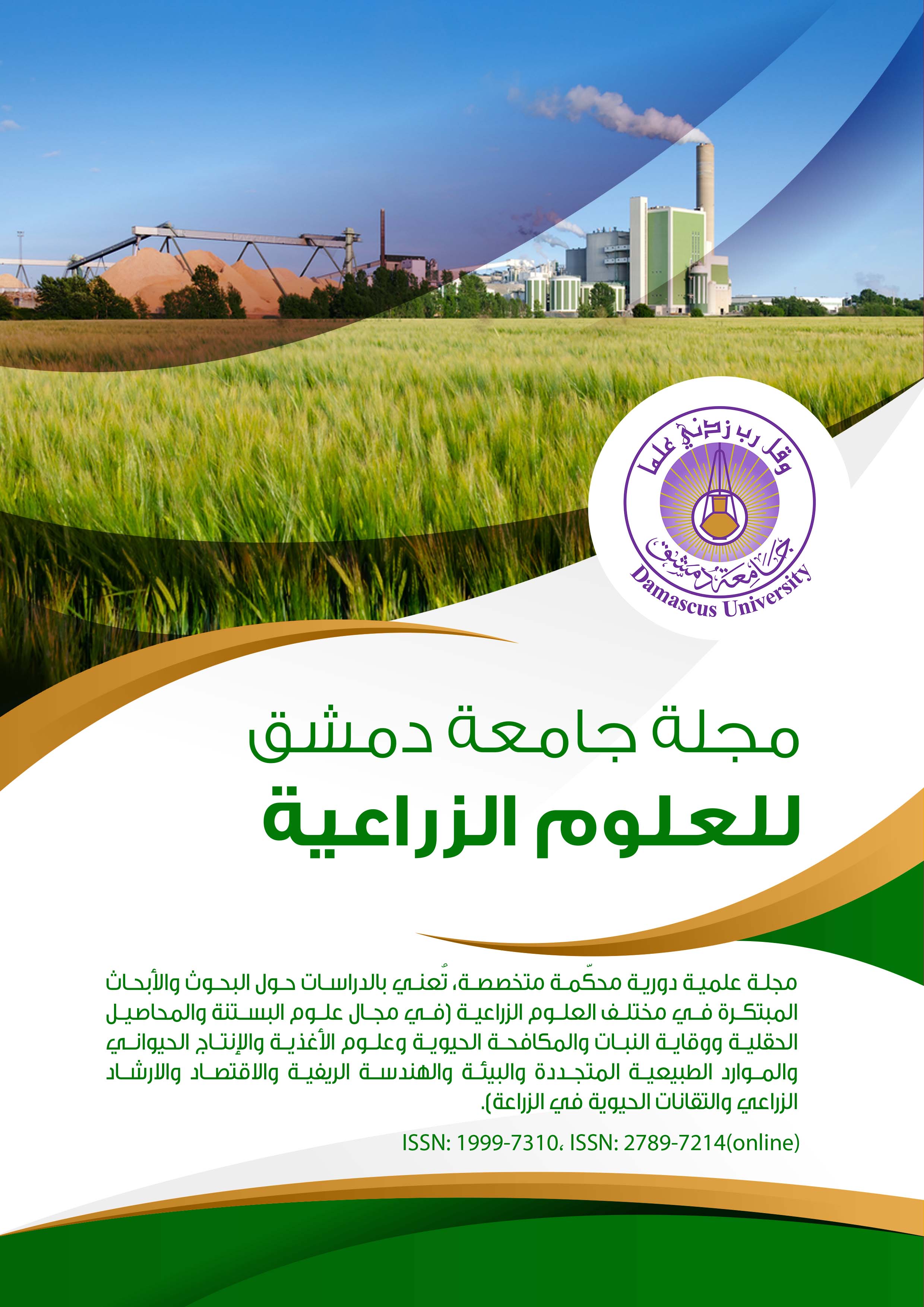Comparison of different production systems for Awassi sheep under in the Salamieh area – Syria by indicators of milk production
Keywords:
Awassi Sheep, Total Milk, Lactation Length, Fat Percentage, Protein PercentageAbstract
The research was carried out at the Marj Al-Karim Research Center in Salamieh to improve the Awassi sheep and at four breeders in the same area during the two years (2021-2022) in order to compare the indicators of milk production for the Awassi sheep in the Marj Al-Karim Research Center with the four breeders. The study included 125 ewes, each group includes 25 ewes. The indicators of milk production for the study groups were measured every 15 days from the beginning of the season until its end, and the percentage of fat and protein in colostrum was estimated on the first and second day for each group, and the percentage of milk fat and protein after every 15 days in Marj Al-Karim Research Center and among breeders using the Lactoscan device. The statistical analysis was conducted based on the analysis of variance test (ANOVA) using the SPSS 26 statistical program. The results of the study showed that there was a significant difference (P<0.05) in the average total milk production between the study groups, so the ewes of Marj Al-Karim Research Center and Breeder 4 outperformed the ewes of Breeders 2 and 3 recorded (106.43±36.15, 104.29±33.64, 68.76±24.64, and 77.49±33.87 kg), respectively. The ewes of Marj Al-Karim Research Center outperformed the ewes of the four breeders in daily milk production, reaching (661.04±222.85, 495.99±154.58, 344.31±81.43, 430.71±172.88, and 546.62±170.66 g), respectively, and the length of the lactation season for the ewes of the Breeder 2 was the longest compared to the rest of the groups, and the ewes of the Marj Al-Karim Research Center were superior to the ewes in the proportion of milk fat. Breeders 1, 2, and 4 were (8.44±0.85, 7.02±0.91, 7.06±0.58, and 6.55±0.32%), respectively, and the ewes of Breeder 2 were superior in the percentage of milk protein to the ewes of Marj Al-Karim Research Center and Breeder 1 (4.68±0.16 and 4.29±0.16 and 4.17±0.22 %), respectively, there were no significant differences in the percentage of fat and protein in colostrum between the ewes of the study groups.

